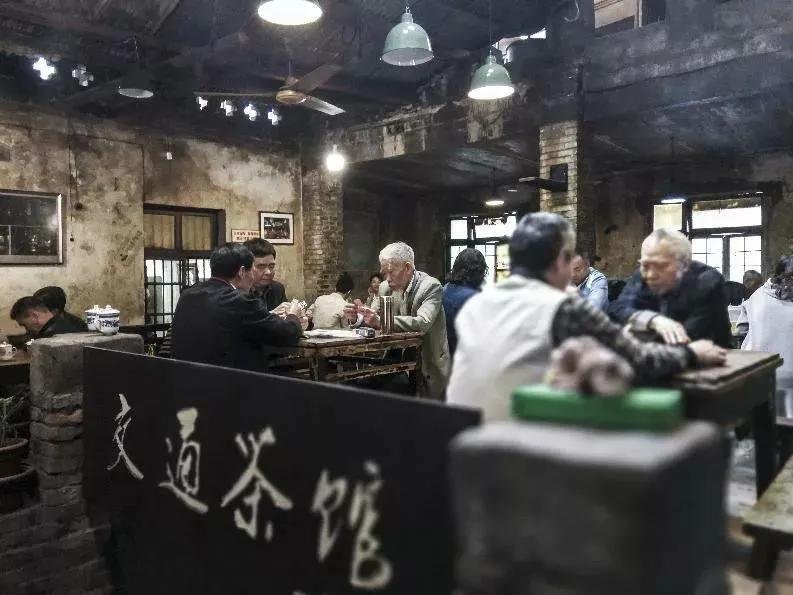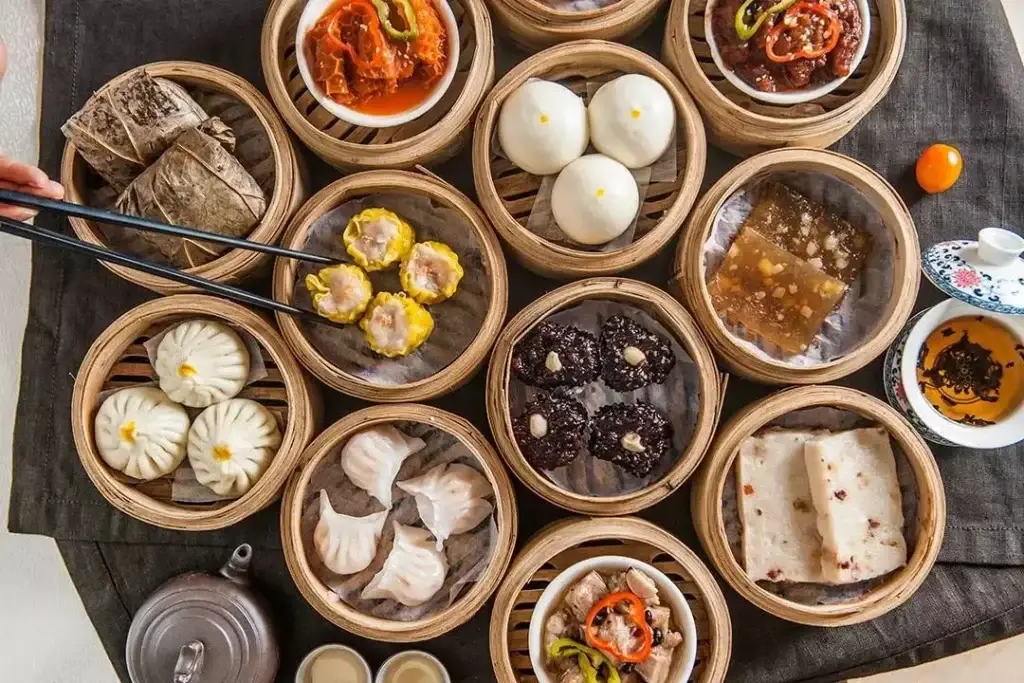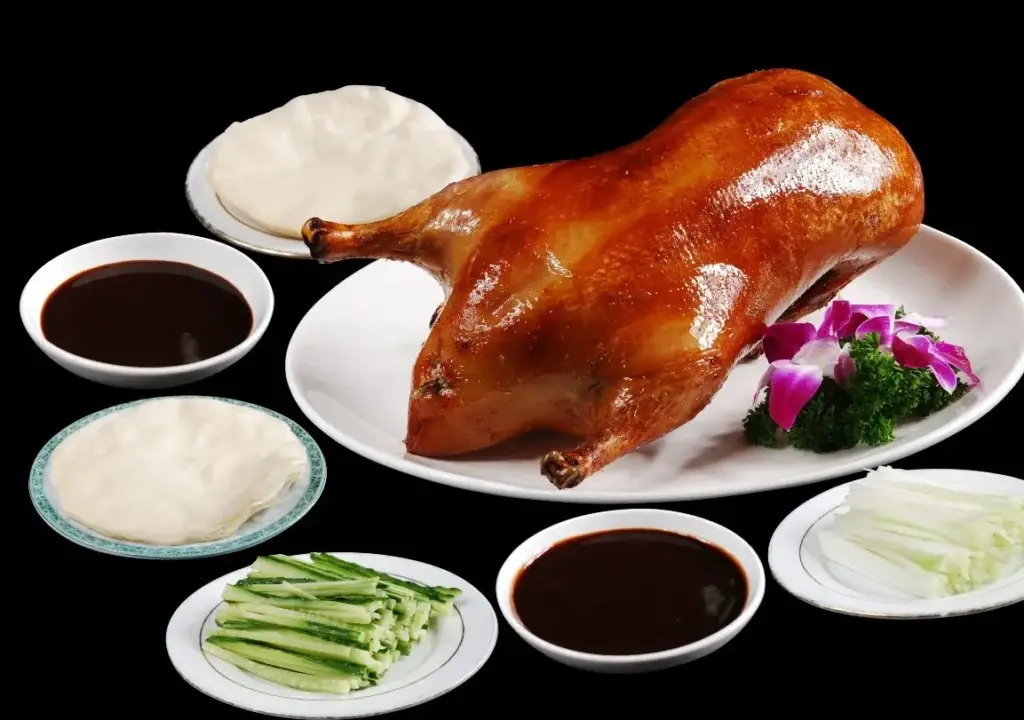Table of Contents
Guangdong Morning Tea: The Art of Slow Living in a Teapot and Two Delicacies
At 7 a.m. in Guangzhou, steam rises from bamboo baskets under arcade buildings, and the clink of teacups pierces the morning mist. A 200-year-old ritual unfolds—Guangdong’s “yum cha” (morning tea), where shrimp dumplings, rice noodle rolls, and the aroma of tea turn everyday life into a flowing feast.
Chapter 1: The Evolution of Tea Houses—From “Two-Cents Cafes” to Michelin Stars
The story of morning tea begins in 19th-century Er Li Guan :
- Dockworker Roots: Laborers squatted in crude tea stalls, spending two cents (≈¥0.02) on bitter tea and hearty snacks: sticky rice wraps for fullness, radish cakes for stamina, and tea leaves brewed thrice.
- Republican Era Glamour: Upscale tea houses like Hui Ru Lou and Tao Tao Ju emerged. Merchants in fragrant gambiered gauze closed deals under birdcages, while upper-class ladies lifted translucent shrimp dumplings with ivory chopsticks.
- Modern Legends: The White Swan Hotel’s “Sachima” requires 200 hand-pulled sugar threads; Bing Sheng’s char siu bao ferments to a precise 3mm crack.
Did You Know? Guangzhou’s oldest surviving tea house, Ronghua Lou (1876), still hosts Cantonese opera performances. As actors sing The Flower Princess, grandmothers tap rhythms with chopsticks.

Chapter 2: The Dim Sum Code—A Culinary Hierarchy of the “Four Heavenly Kings”
1. Har Gow (Shrimp Dumplings): Maritime Economics in Crystal Skins
- Secrets: A golden ratio of wheat starch and tapioca creates translucent yet resilient wrappers.
- Evolution: From 3 folds to 13 “spider belly” pleats, stuffing upgraded from 1 to 3 shrimp, with bamboo shoots dug daily from Baiyun Mountain.
- Hack: “Har gow with crab roe” is the Gen Z luxury upgrade.
2. Siu Mai (Steamed Dumplings): A Hybrid’s Rise
- Origins: Northern-style dumplings reinvented with pork, shrimp, and mushrooms, crowned with ruby-like crab roe.
- Rivalry: Foshan’s Kam Shing insists on hand-chopped pork; Guangzhou’s Pan Xi pioneers quail egg siu mai.
- Rule: Eat piping hot—lard aroma should hijack your nostrils.
3. Char Siu Bao (BBQ Pork Buns): The Smiling Delicacy
- Science of the Crack: 36-hour fermented dough + steam pressure precise to 0.1 Pa = a perfect “smiling” split.
- Sauce Secrets: Lee Kum Kee BBQ sauce base, chilled pork fat cubes, and rose liquor—a sweet-savory symphony.
- Rebel: Black truffle char siu bao—where Cantonese tradition meets French flair.
4. Cheung Fun (Rice Noodle Rolls): Ink Wash Paintings on Silk
- Styles: Silk-like “cloth-pulled” rolls (Yin Ji), snow-white “drawer” rolls (Yuan Ji), stone-ground rice batter (Fong Ji).
- Sauce Wars: Cantonese soy sauce vs. Teochew peanut sauce—chopsticks cast the votes.
- New Wave: Red rice rolls wrapped in crispy nets, dipped in peanut butter—Gen Z’s punk rebellion.
Chapter 3: Tea Table Politics—Finger Taps and Survival Tactics
1. Finger-Tapping Etiquette
- To Juniors: Single-finger tap, like a pecking chick.
- To Peers: Two-finger grace notes, mimicking dragonflies skimming water.
- To Elders: Knuckle salute, signaling “I kowtow.”
2. Dim Sum Cart Warfare
- Har Gow Rush: Raise your hand within 3 seconds of the cart’s arrival—eyes locked on the steamer lid.
- Avoid: Post-2 p.m. chicken feet (re-steamed leftovers).
- Secret Perk: Charm the manager for off-menu goodies like freshly fried rice cakes.
3. The Tea Fee Hierarchy
- Pu’er (¥8): Old-timers’ staple, brewed until the tea turns pale.
- Chrysanthemum Pu’er (¥15): White-collar antioxidant ritual, served in photogenic blue-and-white pots.
- Aged Chenpi Pu’er (¥30): Ten-year-aged tangerine peel—liquid status symbol.
Chapter 4: Morning Tea Sociology—From Family Rituals to Urban Identity
- Grandma’s Ritual: Weekly tea dates in gambiered gauze, teaching grandkids “three bites for a proper savory dumpling.”
- Business Deals Over Steam: Contracts signed amid har gow vapors; bamboo baskets replace PowerPoint slides.
- Immigrant Fusion: A Chongqing restaurateur in Foshan sneaks Sichuan chili dumplings onto carts—now a hit.
- Gen Z Rules: Dian Dou De offers “solo nine-grid sets”—har gow with iced lemon tea, Instagram-ready.
Chapter 5: Global Yum Cha Mutations
- NYC Chinatown: Shrunk char siu bao, but old-timers say “har gow hawkers make it feel like home.”
- Tokyo Takashimaya: Kimono-clad servers present matcha lava buns; housewives practice “yum cha” phrases.
- Paris’ 3rd Arrondissement: Macaron chefs recreate swan pastries—144-layer pastry with balsamic glaze.
Epilogue: Morning Tea Manifesto—The Last Bastion of Slow Food
While Shanghai brunch spots race to perfect runny eggs, Cantonese debate “should the first tea steep be rinsed?”
- Time Philosophy: A 36-hour-fermented char siu bao holds 35 hours and 59 minutes more soul than pre-made meals.
- Space Poetry: Beyond tea house revolving doors, mortgages are discussed and “yum cha” mantras recited.
- Future Forecast: AI dim sum bots fold 32-pleat har gow, but grannies scoff: “No cart auntie asking ‘Want fried dough?’—no soul.”
Listen—the tea house cry echoes: “Char siu baoaaa—fresh from the steamer!” This century-spanning call is both Lingnan’s morning bell and an antidote to our hurried age. 🥢🍵



